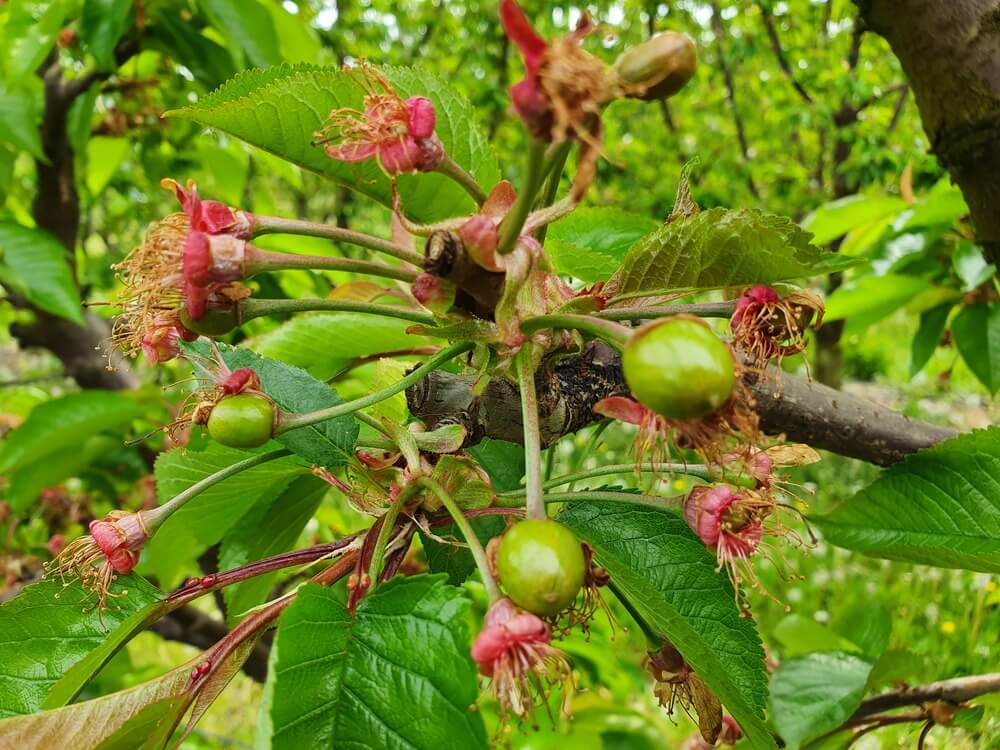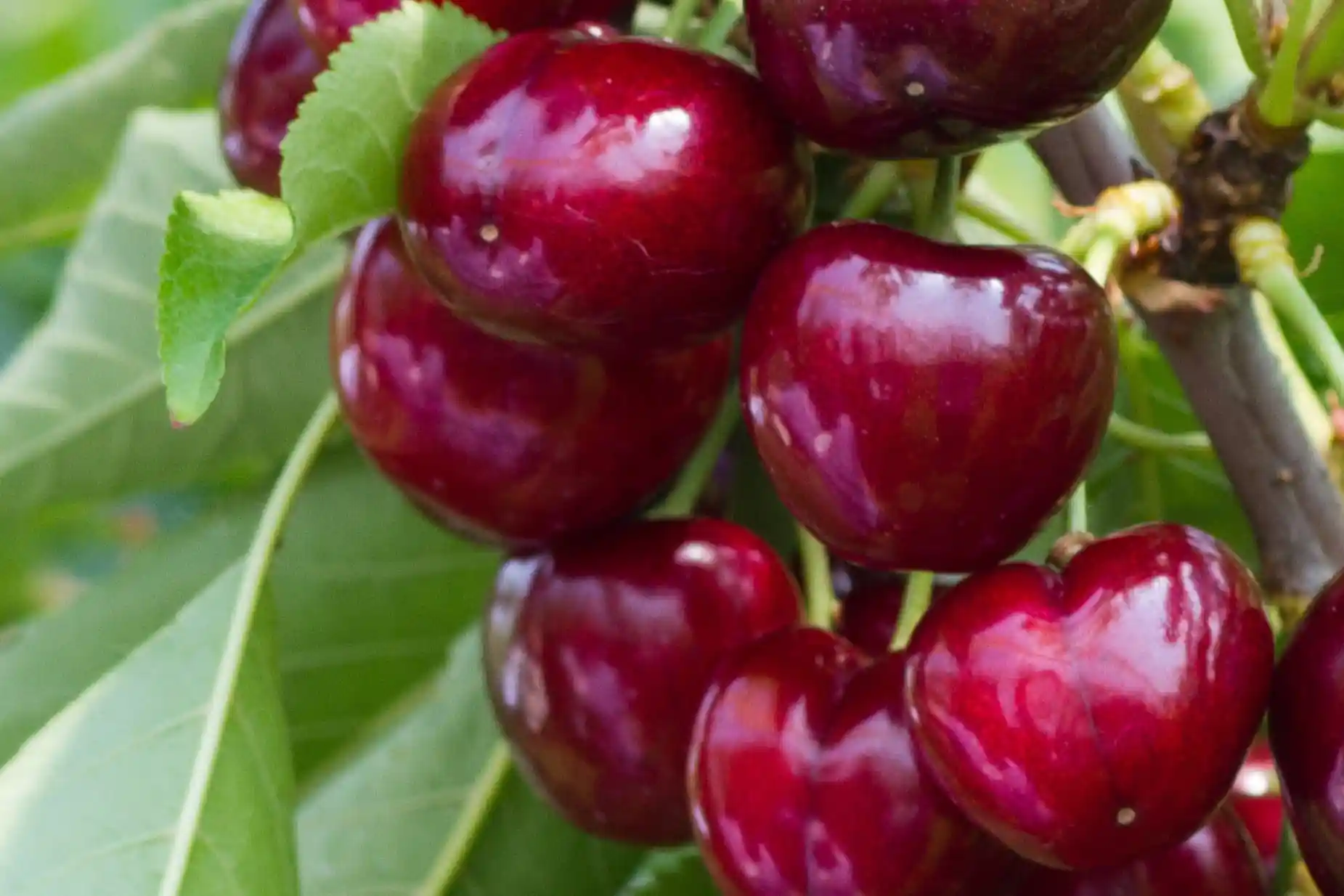Unforeseen climatic events also multiply in Chile; with each new season, cherry growers are faced with new challenges. That is why in the South American country, too, research is rallying around fruit growers to find solutions that allow them to continue producing, maintaining quality and meeting demand.
Climate change and adaptation strategies were recently discussed at 'Expo Cereza' held in Romeral, a village 400 metres above sea level located in the Maule region, the main cherry producing region.
Over 61,500ha of cherry orchards in Chile, endless boom
Chile has experienced a real boom in cherry cultivation over the last 20 years. According to data from ODEPA (Office of Agricultural Policy Studies under the Chilean Ministry of Agriculture), in 2022 the total number of hectares under sweet cherry cultivation was 61,559, in 2004 it was just over 7,000, last year alone then 12,599 hectares of new cherry orchards were planted.
The Maule region alone has 27,818 hectares of cherry orchards. Most of Chile's production is for export, almost 90 per cent of it to China, and just a few days ago the first shipment of the season that has just begun arrived in Shanghai. Also according to official data in 2023, from January to September, 302,827 tonnes were exported with a value of USD 1,819 million, 39.4% of the total value of Chilean fresh fruit exports
Climate change, all the effects on cherry orchards
Cherries are important for Chile's economy, so it is only natural that questions should be asked about the effects of the climate crisis on production. Álvaro Sepúlveda, a researcher at the Centro de Pomàceas of the University of Talca, presented a paper entitled 'Challenges and Tools for Producing Cherries in a Changing Climate' during 'Expo Cereza'.
'The new climate scenario,' Álvaro Sepúlveda told us, 'has generated several complexities, especially in central Chile, where more than 80 per cent of the cerasites are located. Climate change is causing extreme weather events, decreased precipitation, less winter cold, increased photothermal and water stress'.
 Álvaro Sepúlveda
Álvaro Sepúlveda
"This results, for sweet cherry plants, in changes in the frequency of phenological stages, a reduction in net photosynthesis, an increase in photoassimilates in defence systems (pigments, phenolic compounds and antioxidants), higher water demand/lower water use efficiency, loss of fruit quality (colour, size, defects), and a reduction in post-harvest fruit life. The Centro de Pomàceas of the University of Talca has in recent years also been focusing its research on the effects these changes have on fruit quality".
In Chile, there have been long periods of drought since 2006, hot winters (2006, 2012, 2015, 2023), frosts (2013, 2014, 2019, 2022), hailstorms (2018), heavy rainfall close to harvest with consequent cracking problems (2014 and, it is feared, also 2023), and heat waves in spring and summer (2019, 2022).
Plants are put to the test and so are farm budgets. "In general," the researcher told us, "the cherry production areas will experience less winter cold during dormancy and more days of extremely high temperatures during the fruit growing season and the bud formation phases for the following season. We have seen differences in flowering in the last two years. The high accumulation of winter cold in 2022 resulted in an earlier and shorter flowering time.

Heat waves during phase III of fruit growth can affect ripening. During post-harvest on the other hand, they may influence the formation of floral organs in the buds and cause fruit with alterations in the following season. The risk of double pistil fruit increases with an average maximum daily temperature above 32°C, during the hottest month, 100 days after full flowering, which would coincide with organ formation for cultivars produced in the fruit-growing areas of central Chile.
Climate change, short-term and long-term countermeasures needed
And here we introduce the first countermeasures to protect crops such as kaolin applications that still allow gas exchange and can help, especially if supplemented with biostimulants, to protect trees and their buds from high solar radiation and heat stress during the summer.
In the long run, there is the possibility of changing production areas and moving orchards to more suitable areas, given the new climatic conditions. Work can be done on genetic improvement by identifying resilient cultivars, 'cultivars preferably obtained in local improvement programmes, which have low cold requirements, lower water requirements, rich in photoprotective compounds (pigments, antioxidants)'.
In the short term, and therefore for cherry orchards already planted and in production, there are however management strategies that can help to cope with the climate crisis. New technologies can help: 'As technological tools there are many possibilities, from the use of a weather station to the agronomic interpretation of collected data, from the use of decision support platforms to practices or applications of tools in precision agriculture.
Although the application of these technologies is less frequent in fruit trees, there are advances mainly related to fruit counting for harvest estimation, using image processing," Sepúlveda further explained. A variety of products can then be used: "To anticipate or delay flowering and harvest date, to avoid frost, to schedule harvesting by hand or according to commercial criteria".
Finally, the big chapter of covers, which is increasingly necessary both to avoid pest attacks and to prevent problems arising from the climate. Excessive rainfall, at particular times, for example, is the prime suspect for cracking.
"The management of the microclimate relies mainly on the use of roofing, both roof and floor coverings. Depending on the objective, the type of roofing to be used changes. Dense, black shading net against warm winters; waterproof fabric to avoid precipitation; shading net to reduce stress'.
"However, they can also be used to manipulate phenology, according to a production objective. Thus, in central Chile, the plastic cover has been used to force sprouting and the anticipation of the harvest period'.
Barbara Righini
Cherry Times - All rights reserved












